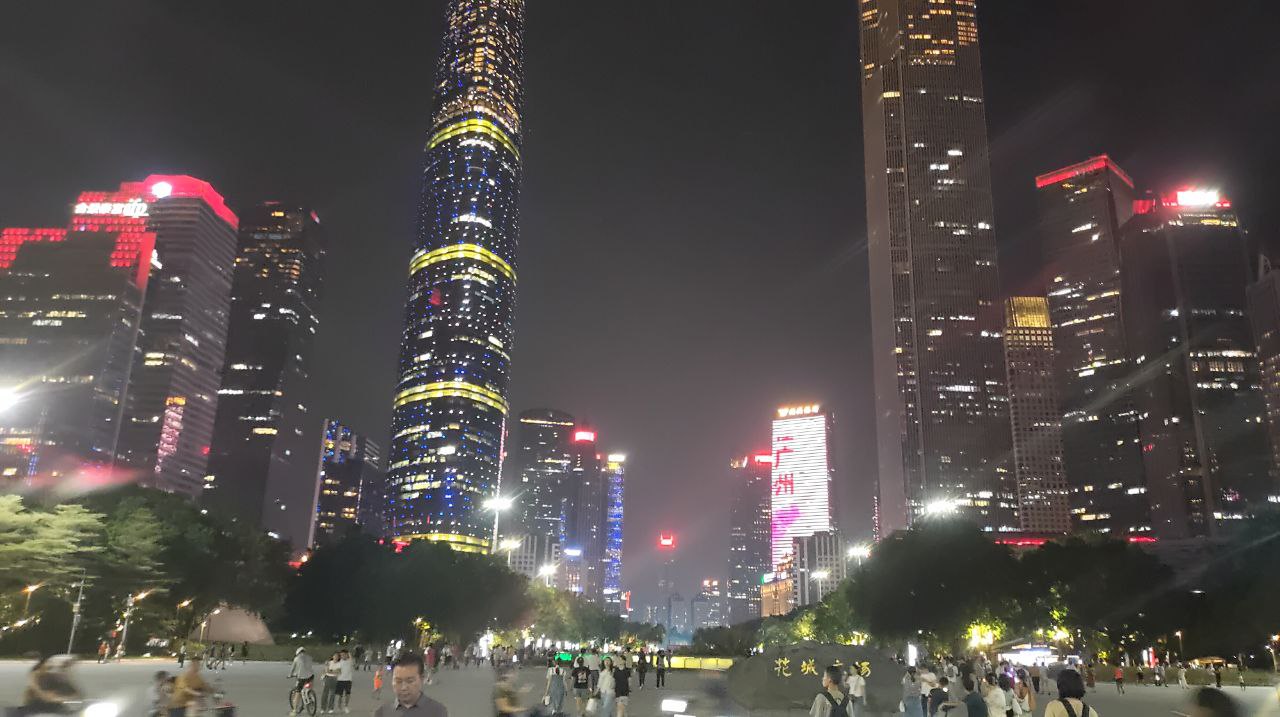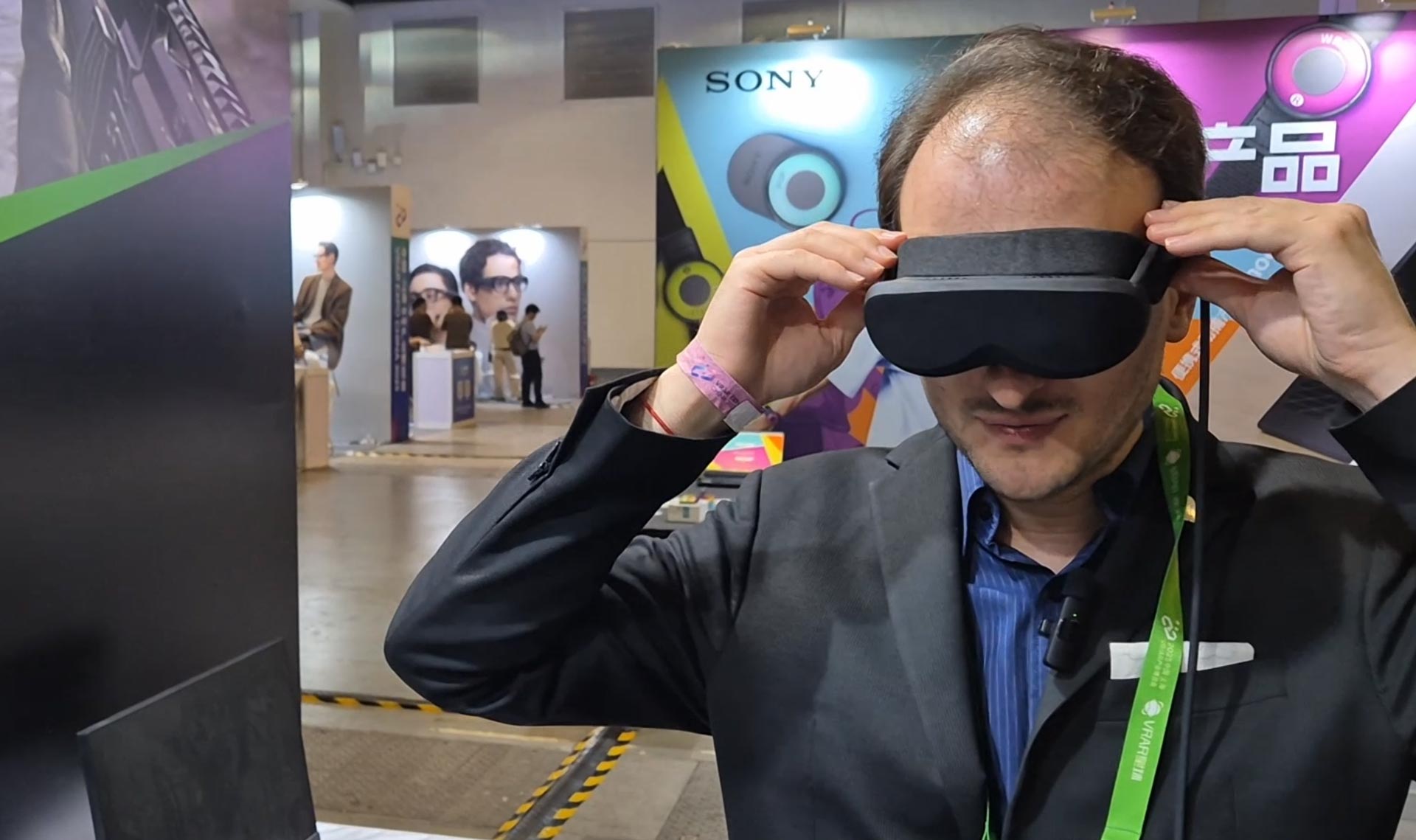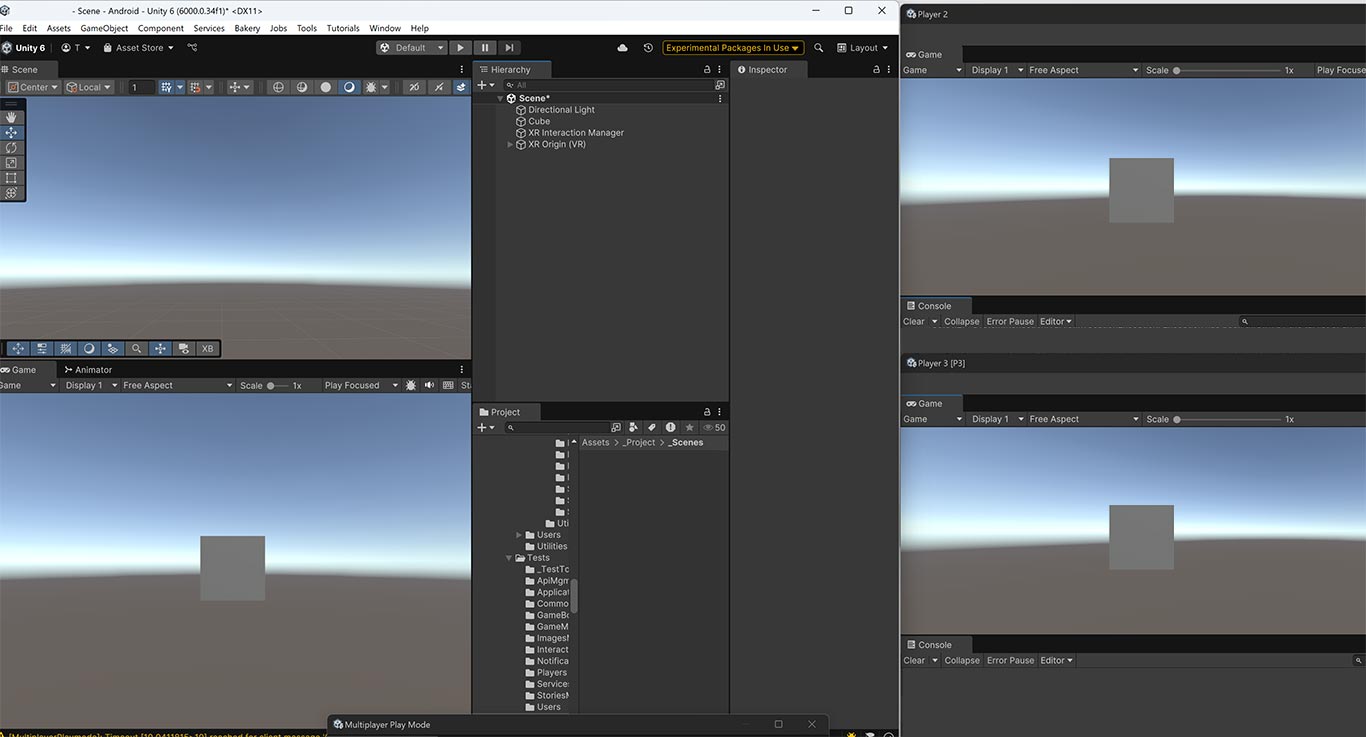My perception of the XR landscape in China in 2024
You may know that this is my third week in China and I’ve toured a few cities to enjoy good food and the company of some friends, but also to meet some companies and some professionals working in XR. Communication between China and the West is not always easy, so the best way to know how things are going here is to speak with people who experience the daily reality of the Chinese XR ecosystem. I’ve asked many people to tell me how XR is going here and I want to tell you what I’ve learned, so you can have a better idea of how XR is going in the country of the Red Dragon. And you will discover that there are many similarities with what is happening in Europe, but also a few differences.
The consumer market without a Quest moment
The biggest difference between the Chinese VR ecosystem and the Western one is the lack of the Oculus/Facebook/Meta/Horizon/whatever Quest. China never had its Quest moment, it never had a company that decided to pour infinite billions into the VR market, hoping that one day, in 10-15 years, that money would have come back. There have been many clones of the Quest, but no one with the same price and the same rich catalog of content.

The company that went the closest to it was Pico: after the acquisition by Bytedance, the smart Chinese startup found itself with enough budget to try to battle Meta. It launched a quite affordable Pico 4 in China, with a growing catalog of good content (part of it from abroad developers) and it had decent sales. But then Bytedance decided to drastically reduce its investments in XR: the rumors say that the company did not have the same patience as Meta of waiting 10 years and wasting billions hoping for a bright XR future, so it cut its Metaverse plans, laying off many people at Pico. After a long silence, Pico is now back with a new (good) device, the Pico 4 Ultra, but it has not the same momentum it had before.
It especially does not have the same price: while the Pico 4 was launched at 2499 RMB (around $345 at that time), the new device is sold for 4299 RMB (around $600), which is almost double the amount. We’ve already seen how price is a very sensitive factor to foster the adoption of XR: the $299 Quest 2 selling around 20M units vs the $499 Quest 3 selling around 1M units is a clear example of it. I would say that since in China the average salary is inferior to the one in Europe and drastically inferior to the one in the US, it’s even harder to sell here expensive headsets. In an article from 2023, Forbes stated that “In 2021, the last full year for which Beijing’s National Bureau of Statistics offers data, the average Chinese worker earned 105,000 yuan a year, the equivalent of $16,153. The average American worker earned some $58,120 a year, 3.5 times his or her Chinese counterpart” [source]. $600 makes for a very different impact if it represents around half of your monthly salary, so the Pico 4 Ultra can have some decent sales, but it can’t be the headset that breaks the market, in my opinion.

Sure, people here are buying very expensive iPhones and Huawei phones, but as we know also here in the West, people understand very well what is the purpose of a phone, but they have no idea why they should get an expensive VR headset. And honestly speaking, considering all the factors into play (lack of content, limited use cases, etc…), I understand that: XR headsets have still to evolve a lot both on the hardware side and the software side before being fundamental for the life of everyone. So until there is a valid consumer-oriented product, people will not spend much money to buy a VR headset. Some tech enthusiasts will do it, but others will be enticed to do it only when the price goes down and the value goes up.
Quest 2 in the West also had success because lots of kids started using it. This new young market has made possible the success of a game like Gorilla Tag. But in China, the government explicitly prohibits young children from spending too much time on games, and also parents pressure children to not spend too much time on games but on studying more. The result is that even this route is not possible for the Chinese XR ecosystem at this time.
Someone I spoke with defined the consumer VR market here as “underdeveloped” and I think it’s a good word to define it. It’s going to grow, but currently, it’s kinda niche.
The enterprise market and the bad economic conditions
To make things worse, people tend to spare money because the economy here is not having a great moment. In general, this is not a moment with favorable conditions in any part of the world: the recession, the wars, the crisis of the tech sector, and all the rest, are creating troubles everywhere. In the US, for instance, in the last few years, there have been huge layoffs from tech companies, and investors are very careful before giving any money to startups. China is not an exception to these economic conditions.
The non-positive economic moment is reducing the sales of the consumer XR headsets, but also the B2B projects. China has been in these years a country where VR found its success in enterprise use cases and I remember well those articles showing schools using a lot of VR headsets to teach stuff to kids in a more immersive and entertaining way. Now the enterprise is still stronger than the consumer side, but recently there has not been much growth in it as well because the bad economic conditions led the government and the various companies to spare money and so not to dedicate it to innovative technologies like XR.

Also here the AI hype arrived, so AI is the tech to work on and the metaverse (or 元宇宙, to say it the Chinese way) is not the hot topic anymore. Finding investments in China for XR software has become very complicated: it is still possible, but you have to propose something outstanding and sell it to investors in the right way.
But there are still sectors where things are going well. I’ve been told that the LBE (Location-Based Entertainment) is still strong here. You know that in Asia (Japan, China, etc…) the gaming arcade rooms are still pretty popular, while in the West they have mostly died. There are various public places where you can enjoy Virtual Reality and this market seems to be doing pretty ok still now. Last year when I visited China and was able to speak with Netvios, I was told that in China there is a much bigger VR gaming market in the outside home than in the at-home VR. This is still true, so if you want to launch your game here, you had better have an LBVR adaptation.

The Apple Vision Pro is not coming to the rescue
Apple Vision Pro has been launched in China, too, and it had a mild reception. When I was in Shenzhen, one of the biggest and most technologically advanced cities in China, I had the pleasure of meeting with a few Apple Vision Pro developers. One of them, Aaron from Illusion Tech (a spatial content platform), told me that the rumor in town is that Apple is selling around 10 Vision Pro units a day in Shenzhen. He added that probably the sales in Shenzhen are affected by the fact that in Hong Kong (which is very close), the headset may be cheaper, but still, 10 units a day in a city of more than 17M people is a bit low. If the rumor is true, if we hypothesize that the sales are the same across the whole of China and that they remain constant for the next year, we can estimate that around 270K Vision Pro will be sold in China in the next year. But these premises are pretty absurd: we’ve seen in the West that the sales of the Vision Pro tend to dry up over time, plus Shenzhen is one of the richest and most tech-savy cities in China, outside it and the other big cities (Shanghai, Beijing, Hong Kong) for sure this headset is going to sell much less (if it is on sale at all). But even keeping the very high estimate of 270K units, it is still a very low number, considering the Chinese population. Even if we consider that the original rumor is wrong, the perception that there is in the community is that the Vision Pro is not having a stellar adoption. The Vision Pro is having so mediocre sales in China as we have in the West.
Also here, like in the West, some people started to think that if even Apple could not reinvigorate the XR market, then XR is doomed to die. So while on one side the fact that Apple entered the market had a positive effect because it gave a big endorsement on the ecosystem, on the other side, its poor sales led many people not to believe in XR anymore. As you can see, there are many parallelisms between the Chinese XR ecosystem and the Western one. In my personal experience, the Apple Vision Pro brought more movement around me and more requests for consultancies, but on the other side, I’ve also read many more “XR is dead” articles than before.

Still, I’ve met people who are developing content from Vision Pro. Besides the indie devs mentioned above, who have also created a Vision Pro community on WeChat, I know that Alibaba released an app for the Vision Pro, and my friend Nikk Mitchell from FXG made me try his clock app for the VisionOS store and a couple of other interesting prototypes he made. This means that the AVP ecosystem in China, while small, is still active, and there are still hopes around this device. Probably things will go better after a few iterations of the headset.
Hardware is still strong
On the hardware side, China is still very strong. Many popular XR glasses brands are Chinese: Pico, Pimax, DPVR, XREAL, Rokid, and TCL to name a few. If you consider the Greater China region, we can even mention HTC, which is based in Taipei. Many accessories you buy for your VR headset, like the ones made by Kiwi Design, are made in Shenzhen. The open-source North Star headset that the genius Noah Zerkin is carrying on, is being designed in Shenzhen, too. And how not to remember that Goertek, the company manufacturing all the Meta Quest devices, is based in Qingdao?

Years ago, the Chinese government had plans to make China the leader in VR by 2025. I think where the government money succeeded was in making China the leader in VR hardware manufacturing. This sector is still strong and probably is going to continue in the same way for the foreseeable time. China keeps being a country where hardware is very strong, but there is not enough good software content. This is a problem for the country, but also an opportunity for us software developers to try to partner with Chinese companies offering our content to them.
The diversification towards the West and the non-VR markets
Since the West is a big market, too, many companies are paying attention not only to the Chinese market but also to the Western ones. And the American one is where the real money is, because the US, because of the higher salaries and the innovation push from Silicon Valley, is where the XR market is developed the most. The AVP indie developers I met in Shenzhen all told me that they are publishing their experiences to the VisionOS store in English because they hope to get the attention of the American market. This, again, is not that different than what is happening in Europe: also the sales of the applications on the Meta Horizon Store mostly come from the US, so at the end of the day, we are all developing apps mostly for the US market.

Talking about diversification, XR companies are also trying to diversify their products not to aim only at the XR enthusiasts. The recent success of the various media consumption smartglasses from Rokid and XREAL is mostly because of people who want to enjoy media or play 2D games on a big screen in front of their eyes, not from AR enthusiasts. Insta360, which is the worldwide leader in consumer 360 cameras, is now selling action cameras that directly compete with Go Pros and other pieces of hardware that aim at recording 2D videos. Again, this is what we XR people are currently doing in every part of the world, diversifying our efforts and doing also other kinds of 3D and 2D stuff until the market is mature enough to let us sustain ourselves with just our XR products.
The enthusiasm is the same in all parts of the world

Meeting with XR people in China, I realized that no matter the country, we XR people all face the same fears, the same joys, and the same challenges. I’ve met here in China a lot of guys and girls who have a true passion for XR and who are still trying to succeed notwithstanding all the difficulties of the sector. These are the same sentiments that I’ve found in all the parts of the world I’ve traveled, from the US to Finland to my home country Italy. Many talented and motivated people are fighting however they can to succeed in a complicated moment.
I will always remember with affection a dinner organized by Alibaba where I met some Chinese VR content creators, who publish content on Chinese platforms like BilliBilli (which is the Chinese YouTube) or DouYin (which is the Chinese name of TikTok), but they also try to get visibility on Western channels like Youtube. They are mostly unknown to us in the Western communities but they do similar types of content, also exploiting the fact that many XR hardware manufacturers are close to them in China. I wonder if somewhere in this country there is also a Chinese Skarredghost writing walls of text for his Chinese VR audience. (If you know him, let me meet him!)
I had next to me at the dinner DannieVR, who is one of these Chinese content creators and I can say she’s a very nice person, very passionate about VR. I’ve also tried to watch some of her videos after our meeting and they look nice, but since there are no English subtitles, I have no clue what she’s saying there (or to say that in pretty colored Chinese, 我他妈什么都听不懂)
It was fun speaking with the VR “Youtubers” of China. And it was interesting to see that they know about us much more than we know about them. It could be amazing to create more bridges between Western and Chinese content creators!
Final considerations

I’m coming out from this trip to China with the impression that the Chinese XR market is more or less what our Western one would have been without Meta and its Quest headsets. The consumer market is underdeveloped and the B2B one is more prominent.
Probably the main differences with a pre-Quest Western market are that in China there is more hardware than in the West would have ever been and there is an LBE market that we never had. But for the rest, I’ve seen a lot of similarities: the unfavorable economic conditions and the limited investments, the hopes for the future of Vision Pro, the attention to what is happening in the US, and especially the passion and the motivation of people in XR.
At the end of the day, we are all on the same boat: China, Europe, and the US have all peculiar conditions, but in the end, we are all waiting for the moment XR will take foot. And sooner or later it will arrive, my brothers and sisters, we just have to be patient. 慢慢来。。。
(PS Since today is the Mid Autumn Festival here, I wish you all a wonderful holiday and an amazing Autumn!)
Disclaimer: this blog contains advertisement and affiliate links to sustain itself. If you click on an affiliate link, I'll be very happy because I'll earn a small commission on your purchase. You can find my boring full disclosure here.



